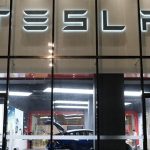Most of the tax changes in the 2017 Tax Cuts & Jobs Act (TCJA) expire (sunset) at the end of 2025. TCJA featured tax cuts and some tax hikes to help pay for it. Meanwhile, TCJA’s massive tax cut lowering the corporate tax rate to 21% does not expire.
Accountants and taxpayers have grown accustomed to TCJA, although they were whipsawed by the 2020 CARES Act, which temporarily forestalled several tax-hike provisions. Switching back to pre-TCJA law starting in tax year 2026 might be awkward, and it could become confusing if Congress turns tax law upside down again.
With a lame-duck-divided 2024 Congress, I don’t expect significant tax law changes until 2025, when most TCJA provisions expire. I also don’t expect Congress to implement substantial tax law changes until the last minute before the 2025 year-end fiscal cliff. The November 2024 presidential and Congressional election might give us clues about coming tax changes.
TCJA permanent provision:
The 21% corporate flat tax rate enacted under the TCJA is permanent and does not expire. Before the TCJA, the federal corporate income tax rate was graduated, with a top marginal rate of 35%. Lowering the corporate rate was the principal tax cut in TCJA.
Pass-through entities (PTE) like LLC/partnerships and S-Corps don’t qualify for the corporate tax break, so Congress equalized PTE businesses with a 20% qualified business income deduction (QBID). However, QBID sunsets in 2025.
Will the 2025 Congress consider extending QBID, provided they don’t increase the corporate tax rate? QBID has been a complex tax compliance issue for taxpayers and tax professionals. Many small businesses at all income levels benefit from QBI.
TCJA sunset provisions:
Most of TCJA’s tax cuts and tax-hike provisions were initially set to expire in 2025.
The list below includes some of these provisions. For a complete list of expiring tax provisions in TCJA, see Congressional Research Services (CRS) Reference Table: Expiring Provisions in the “Tax Cuts and Jobs Act.”
Marginal tax rates—The lower marginal tax rates in TCJA expire at the end of 2025. Individual tax rates will return to pre-TCJA levels starting in 2026. It’s important to note that lower TCJA tax rates apply throughout the marginal tax brackets, helping taxpayers at all income levels.
“Marginal rates will revert to their permanent pre-TCJA levels of 10%, 15%, 25%, 28%, 33%, 35%, and 39.6%. Aside from the first two brackets (10% and 15%) these rates apply over different ranges of taxable income than the TCJA rates. These income ranges are annually adjusted for inflation,” per the CRS report.
Increased standard deduction—TCJA’s roughly doubled standard deduction (indexed for inflation) returns to pre-TCJA levels on January 1, 2026. Looking back, Congress achieved its goal of more taxpayers using the standard deduction, making tax compliance more accessible and straightforward.
“The basic standard deduction amounts will revert to their TCJA levels and then be adjusted for inflation. For 2018, prior to the TCJA, the basic standard deduction amounts for 2018 would have been $6,500 for single filers, $9,550 for head of household filers, and $13,000 for married taxpayers filing jointly,” per CRS report.
Itemized deductions—Before the TCJA, taxpayers could deduct many more itemized deductions on Schedule A. This included “miscellaneous itemized deductions” over 2% of adjusted gross income (AGI), including investment expenses, unreimbursed employee business expenses, and tax compliance expenses. Before TCJA, alternative minimum tax (AMT) disallowed miscellaneous itemized deductions.
Of the few allowed itemized deductions, TCJA reduced and revised them. See the CRS report for mortgage interest deductions and changes in charitable deductions. TCJA suspended personal casualty losses as itemized deductions, except for losses in a federally declared disaster area.
Active traders eligible for trader tax status (TTS) deduct trading business expenses on Schedule C as sole proprietors, bypassing Schedule A. TTS traders also deduct business expenses on pass-through entity tax returns. TTS was better than investor status before and during the TCJA, and it should stand up well to tax changes coming next year.
State and local taxes— TCJA limits a SALT itemized deduction to $10,000, which led many taxpayers to take the roughly doubled standard deduction instead of itemizing. The SALT cap was not indexed for inflation.
Starting in 2026, the $10,000 cap will not apply, and taxpayers can deduct all eligible state and local income, sales (instead of income), property taxes, and foreign income taxes. They will also be able to deduct foreign real property taxes. AMT does not allow a state and local tax itemized deduction.
Pass-through entities (PTE), including partnerships (general, limited, and LLCs) and S-corps, can utilize a SALT cap workaround in more than 30 states. The workaround treats PTE state tax payments as business expenses rather than non-deductible SALT payments. The taxpayer takes a tax credit on their state tax return for the entity-level PTE payments, thereby avoiding double taxation. California’s SALT cap workaround expires in 2025 in sync with TCJA’s SALT cap expiration. The SALT cap workaround in other states may expire as well.
20% qualified business income deduction (QBID)—The QBID for non-corporate business owners, including sole proprietors, partnerships, LLC/partnerships, and S-Corps, expires at the end of 2025. It is a significant tax cut for small businesses, especially those not classified as a “specified trade or business” (SSTB).
Traders eligible for TTS are SSTB. TTS expenses and Section 475 ordinary trading income or loss are included in QBI, excluding capital gains and losses, and portfolio income. Many traders have received a QBID tax benefit.
Excess business losses (EBL)—The TCJA created the EBL limitation for 2018 through 2025 as a tax hike to help pay for the TCJA tax cuts. Subsequent legislation extended the EBL expiration date to 2028. The 2020 CARES Act delayed the EBL, pushing the start date to 2021.
Under TCJA, add the excess business losses over the EBL threshold to a net operating loss (NOL) carryforward.
The EBL is inflation-adjusted; it’s $610,000 (for joint returns)/$305,000 (for other taxpayers) for 2024. When this provision expires, there will be no EBL limitation.
EBL includes TTS expenses and Section 475 ordinary trading losses for TTS traders. Section 475 gains can offset other business losses before applying the EBL limitation.
Net operating losses (NOLs)—The TCJA, as a tax hike, repealed two-year NOL carrybacks and revised NOL carryforwards. However, CARES temporarily allowed five-year NOL carrybacks for 2018 through 2020. TCJA NOL rules came back in effect for 2021 through 2025.
TCJA limits NOL carryforwards to 80% of taxable income (100% pre-TCJA), with the balance carrying over to the subsequent year (limited to 20 years pre-TCJA). In 2026, two-year NOL carrybacks and the 100% NOL carryforward rules will apply.
Increased estate exemption—TCJA’s roughly doubled unified estate and gift tax exemption amount will return to the pre-TCJA amount of $5 million (indexed for inflation) as of January 1, 2026. That inflation-adjusted amount for 2026 is expected to be approximately $7 million. That’s a significant reduction from the 2024 unified estate and gift tax exemption of $13.61 million.
With an estate portability election, a married couple can have an exemption of up to $27.22 million for 2024. Post-TCJA, it could be around $14 million. The estate amount over the exemption amount is subject to a 40% federal estate tax.
Don’t overlook state estate taxes. Twelve states (and DC) have estate tax laws, and six have an inheritance tax. Eight states have an estate tax rate of 16%, a few are 12%, and Washington and Hawaii are 20%. For 2024, Connecticut matches the federal exemption amount but does not allow surviving spouse exemption portability. Other states range between $1 million for Oregon and $6.9 million for New York.
Star Johnson, CPA, contributed to this blog post.
Read the full article here
















